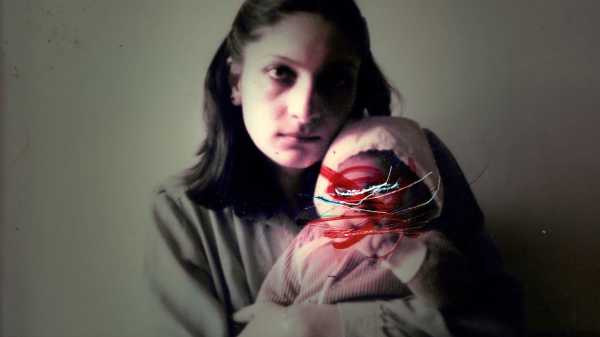
Ahangarani sees poignant resonances between the events of 1988 and the scenes playing out in Iran today.
Three years ago, the Iranian filmmaker Pegah Ahangarani was looking through her family picture album, and saw a photo of herself in a tree, with her family friend Gholam, in the foreground—his face was obscured by scratches and marks that had, over time, become a radiant smudge of gold. Ahangarani told me that seeing this album of photos from the late nineteen-eighties provided “the very first spark” that grew into her film “I Am Trying to Remember.” The film is composed entirely of archival photos and videos, mostly taken by Gholam. Ahangarani provides voice-over narration, accompanied by melancholic strings, in a rhythmic, powerful incantation. “Working with archival footage and photos gave me a great advantage and enabled me to tell my story in the simplest form,” Ahangarani told me. The texture of the old films—grainy, shaky, sunburst—paired with the narration and music, delicately evokes childhood, a first brush with love, a day in the countryside, and a family’s efforts to preserve those memories.
Ahangarani’s personal memories blend with historical events when the images of her youth give way to footage of the Islamic Revolution, a decade earlier, taken by Gholam: men running, indistinct shouting, smoke and fire, and Tehran’s Azadi Tower looming in the background. The soundtrack, too, becomes tense. In this transition, memory itself becomes political. “In dictatorships like Iran, part of history is constantly being wiped out, especially the brutality of crimes and the mass executions,” Ahangarani told me. Gholam was one of thousands of political prisoners executed by the government in 1988.
The New Yorker Documentary
View the latest or submit your own film.

The film, Ahangarani said, is her attempt to “remind the audience of what happened in a very dark time in Iran’s modern history, which has not been acknowledged as much as it needs to be.” While looking through the photo albums of friends, she sees many faces scratched, just like the photo of the first man she loved. “So many Gholams,” she narrates, as the obscured faces of the victims of executions pass by, and she names every one of them.
Though Ahangarani began the film three years ago, she sees poignant resonances between the events of 1988 and the scenes playing out in Iran today, as the regime imposes death sentences on citizens protesting women’s oppression. “It seems like what happened at the beginning of the 1979 revolution is being repeated, and, unfortunately, we are witnessing the same mind-set of the rulers in the crackdown on any protest and demand for a better life,” Ahangarani told me. Her film, she says, with the images of people who were lost, is a “reminder that what happened then is happening today and that we should not be indifferent.”
Sourse: newyorker.com






